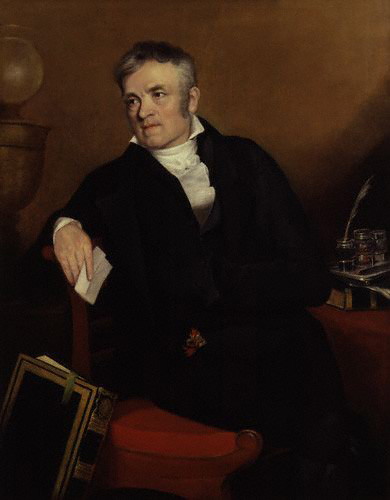Rudolph Ackermann (Rudolph Ackermann)

He attended the Latin school in Stollberg, but his wish to study at the university was made impossible by lack of financial means, and he therefore became a saddler like his father. He worked as a saddler and coach-builder in different German cities, then moved to Paris, and then London, where in 1795 he established a print-shop and drawing-school in The Strand. Ackermann set up a lithographic press and begun a trade in prints. He later began to manufacture colours and thick carton paper for landscape and miniature painters. In 1809 he applied his press to the illustration of his Repository of Arts, Literature, Fashions, which appeared monthly until 1829, when forty volumes had appeared. Thomas Rowlandson and other distinguished artists were regular contributors. Repository documented the changing classicising fashions in dress and furniture of the Regency. He also introduced the fashion of the once popular Literary Annuals, beginning in 1823 with Forget-Me-Not; and he published many illustrated volumes of topography and travel, including The Microcosm of London (3 volumes, 1808–1811), Westminster Abbey (2 volumes, 1812), The Rhine (1820) and The World in Miniature (43 volumes, 1821–6).
In 1801 he patented a method for rendering paper and cloth waterproof and erected a factory in Chelsea to make it. He was one of the first to illuminate his own premises with gas. Indeed the introduction of lighting by gas owed much to him. After the Battle of Leipzig, Ackermann collected nearly a quarter of a million pounds sterling for the German casualties. He also patented the Ackermann steering geometry.
Born
- April, 20, 1764
- Schneeberg, Germany
Died
- March, 30, 1834
- London, United Kingdom
Cemetery
- Kensal Green Cemetery
- London Borough of Brent, London, England

